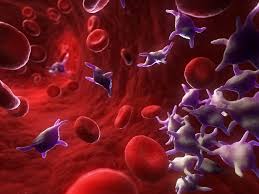What is atherosclerosis?
Atherosclerosis is a disease of the arteries which can lead to heart attack, stroke and death. The function of arteries is to deliver oxygenated blood to the heart and other parts of the body.
In the case of atherosclerosis, a plaque is formed inside the artery wall which, with time, hardens and narrows the artery making the blood flow more difficult.
This plaque is built from various substances found in blood such as cholesterol, fat molecules, calcium and macrophages.
Pathogenesis:
In summary, for the atherosclerotic plaque build-up to occur, the artery wall needs to be damaged through some sort of stress and the building material (cholesterol and other) needs to be delivered and deposited through the compromised arterial wall.
Stress to arterial wall can be caused by various factors, but the delivery of building material is done by lipoproteins, specifically LDL cholesterol transporters of the small, dense type.
Atherosclerosis doesn’t occur without the above risk factors, even in the presence of a higher than “normal” total cholesterol level.
The process of forming atherosclerotic plaque starts with the irritation of the inner layer of the artery called endothelium. The irritation can be caused by various factors, such as smoking or high blood pressure.
The body’s immune system reacts to this irritation by sending white blood cells to clean-up and remove the irritants and heal the area. Inflammation is a necessary part of the healing process.
The injury caused by the irritation may be a one-time occurrence and the issue may go away. But if the irritation occurs on regular basis, the inflammation of the arterial walls becomes chronic and the body’s defense system starts to behave uncontrollably and may act against the heart’s health.
Since the endothelium is irritated and inflamed, it is easier for certain particles to penetrate their walls. This is where the well-known LDL particle starts its plaque formation process. But it is not any LDL lipoprotein, but a small, dense LDL type.
Small dense LDL particles have low antioxidant levels, so when these small particles get between the layers of an inflamed artery wall, they are easily oxidized and broken down by other chemical processes.
The presence of oxidized LDL and their components cause the release of more white blood cells (macrophages). These macrophages are like vacuum cleaners.
They “swallow” the remnants of LDLs. Macrophages are, however, unable to destroy/eliminate cholesterol and fat molecules that are swallowed, so they become large and foamy.
Eventually, macrophages cannot continue to clean-up, die and release toxic substances.
These substances contribute to breaking up the plaque, increasing the danger of blocking arteries and heart attack (when part of the heart muscle dies) which may result in death.
The irritated cells in the artery lining produce molecules that attract special cells released by the defence system.
Those molecules act like sticky tapes and become a seedbed for the plaques that get formed from the collection of fluffy macrophages, cholesterol, remnants of the damaged cells and chemicals released in the process.
The build-up of this material is strengthened by a fibrous cap created in the process.
The build-up of the plaque continues blocking the blood flow.
Plaques may be stable with a large amount of fibrous tissue that have a little risk to rupture and they can be unstable such as those younger plaques loaded with cholesterol and covered by a proportionally small amount of fibrous layer.
To reduce a risk of the heart disease one needs to reduce or eliminate risk factors. Some of these risk factors (such as cholesterol amounts vs lipoprotein count) are still misunderstood by many health professionals
Causes:
Causative factors for atherosclerosis include-
► Smoking
► Excessive alcohol
► Stress
► Lack of exercises
► High blood pressure
► High cholesterol
► High LDL levels
► Diabetes






